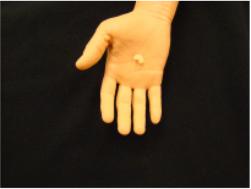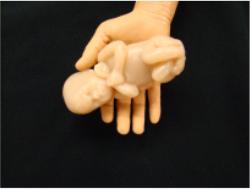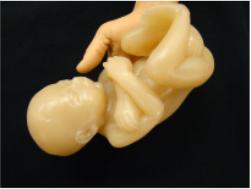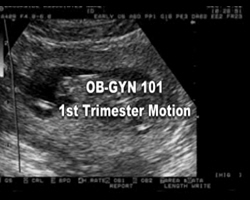This is the Archived Desktop Edition.
You should be transferred to the Newest Edition for Desktop and Mobile within 2 seconds.
|
Lesson 2: Embryology and Fetal Development
|
2-8. FETAL GROWTH AND DEVELOPMENT
Growth refers to an increase in size. Development is the continuous process by which an individual changes from one life phase to another. These phases includes the prenatal period and the postnatal period. Fetal maturation takes place in an orderly and predictable pattern. The physicians refer to the age of a pregnancy as lunar months. The lunar months corresponds to the usual length of the menstrual cycle, in this respect, it is easier to calculate. A lunar month is a period of four weeks (28 days) and a trimester is a time period of 3 months.
a.
First Trimester. During the first three months of pregnancy, the product of conception grows from the just-visible speck to the fertilized ovum to a lively embryo. At the end of the first trimester, the following changes have or are occurring:(1) All organs are formed.
(2) The fetus becomes less vulnerable to the effects of most drugs, most infections, and radiation.
(3) Facial features are forming and the fetus becomes human in appearance.
(4) External sex organs are visible, but positive sex identification is difficult.
(5) Well-defined neck, nail beds beginning, and tooth buds form.
(6) Rudimentary kidneys excrete small amounts of urine into the amniotic sac.
(7) There is movement but just not strong enough to be felt.
(8) The fetus is about 2.9 inches long and weighs about 14 grams.
b. Second Trimester. During these months (4th, 5th, and 6th) the fetus grows fast. At the end of the second trimester, the fetus:
(1) Fetal heart tone (FHT) can be heard with a stethoscope.
(2) Skin is wrinkled, translucent, and appears pink.
(3) Sex is obvious.
(4) Looks like a miniature baby.
(5) Skeleton is calcified.
(6) Birth survival is possible, but the fetus is seriously at risk.
c. Third Trimester. At the end of the third trimester (7th, 8th, and 9th month), the fetus:
(1) Skin is whitish pink.
(2) Hair in single strands.
(3) Testes are in the scrotum, if a male child.
(4) Bones of the skull are firmer, comes closer at the suture lines.
(5) Lightening occurs.
(6) Fetus is about 20 inches long and weighs about 3300 grams.
NOTE:
Lightening is defined as the sensation of decreased abdominal distention produced by the descent of the uterus into the pelvic cavity. This usually occurs two weeks before the onset of labor.a. The length of pregnancy varies greatly. Nevertheless, the normal duration of pregnancy is about 9 1/2 to 10 months (lunar), 38 to 40 weeks.
b. It is usually not possible to determine the actual time of fertilization because reliable records concerning sexual activities are seldom available. However, the approximate time can be calculated.
c. The estimated date of confinement (EDC) is calculated as follows:
(1) The first day of last menstrual period.
(2) Count back 3 months.
(3) Add seven days.
(4) Add one year.
|
The Brookside Associates Medical Education Division is dedicated to the development and dissemination of medical information that may be useful to medical professionals and those in training to become medical professionals. This website is privately-held and not connected to any governmental agency. The views expressed here are those of the authors, and unless otherwise noted, do not necessarily reflect the views of the Brookside Associates, Ltd., any governmental or private organizations. All writings, discussions, and publications on this website are unclassified.
© 2007 Medical Education Division, Brookside Associates, Ltd. All rights reserved





